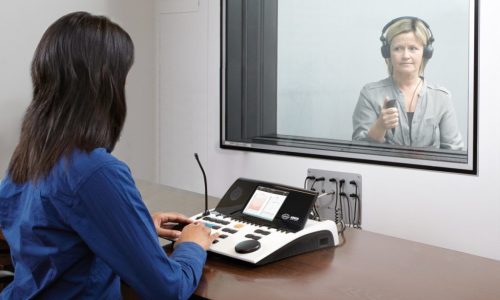Types of Hearing Test
Several types of hearing tests are conducted to assess different aspects of auditory function. Here are some common types

Pure - Tone Audiometry
Measures hearing sensitivity by determining the softest tones a person can hear at different frequencies (pitches).

Speech Audiometry
Evaluates the ability to hear and understand spoken words at varying volumes.

Tympanometry
Assesses the movement of the eardrum in response to changes in air pressure, helping identify issues in the middle ear

Otoacoustic Emissions (OAE) Test
Measures the sounds produced by the inner ear in response to a stimulus, providing information about cochlear function.

Speech Recognition Test
Measures the ability to understand speech, often presented at different intensities.

Real-Ear Measurement (REM)
Involves placing a tiny microphone in the ear canal to measure the actual sound level produced by a hearing aid.
Why hearing aids are required
Hearing aids are crucial for individuals experiencing hearing loss as they help amplify sounds, making them audible and improving overall communication. Here are some key reasons why hearing aids are essential
Enhanced Communication
Hearing aids enable individuals to better understand speech and engage in conversations, improving their communication abilities.
Improved Quality of Life
Addressing hearing loss with aids can enhance one's overall quality of life by fostering better connections with family, friends, and the surrounding environment.
Social Interaction
Hearing aids facilitate participation in social activities, reducing feelings of isolation or exclusion that can result from difficulty hearing and understanding others.
Safety
Being able to hear environmental sounds, such as alarms, traffic, or warnings, contributes to personal safety and awareness of the surroundings.
Cognitive Benefits
Addressing hearing loss may have positive effects on cognitive function, as studies suggest a link between untreated hearing loss and cognitive decline.
Workplace Productivity
Hearing aids can improve performance at work by aiding in communication during meetings and conversations, contributing to better job satisfaction and career advancement.
